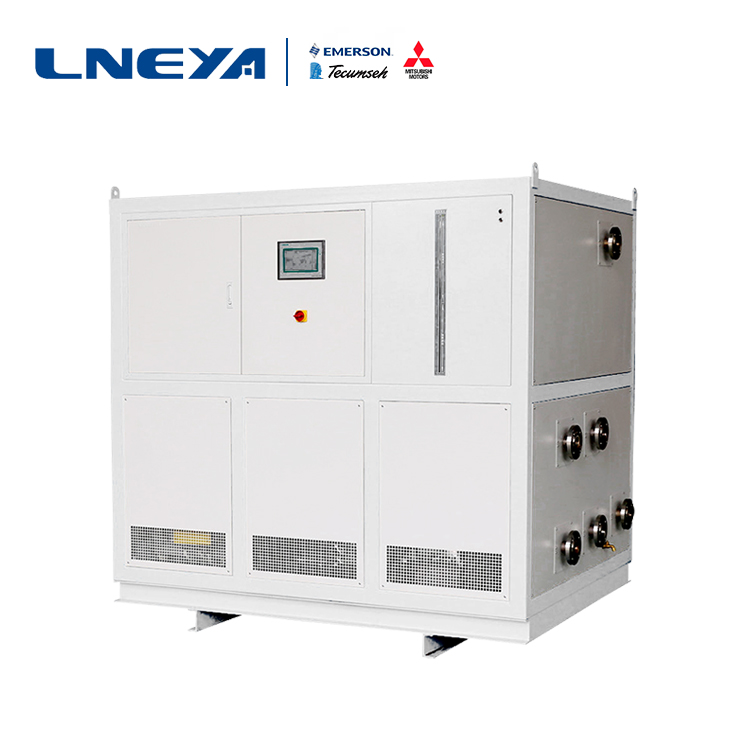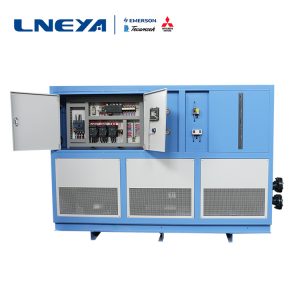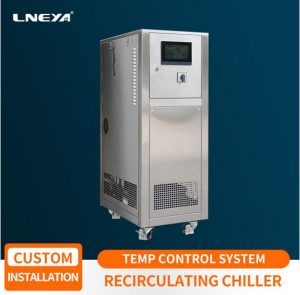Come si svuota il sistema di refrigerazione del frigorifero criogenico?
Users who use ultra-low temperature chillers will encounter some problems when they are not used for a long time, such as poor cooling performance and loud sound. These problems are more common, but some refrigeration systems need to be well understood.
Normally, in order to ensure the normal use of the cryogenic refrigerator, we will perform derusting and sewage disposal before installation. But even this will prevent some dirt such as welding slag, iron filings, and sand from remaining inside the system. Therefore, in order to prevent dirt from being damaged to some original parts such as a compressor, the problem of system piping blockage is avoided. The refrigeration system must be drained after installation.
Drainage work can be divided into pipe group, room unit, system layering or segmental sewage disposal. The general principle is that the dirt is blown clean without damaging the valves and other components.
In order to check whether the coil of the cryogenic refrigerator is clogged, a ball test can be performed. The diameter of the wooden ball used in the test should be smaller than the inner diameter of the pipe and larger than the radius of the pipe. The air in the gas tank can be blown in, and the flow is required to be unimpeded.
In the work of sewage discharge of the ultra-low temperature chiller, if it is found that the pipeline and the valve have obvious air leakage points, it is necessary to weld the welding or tighten the flange of the relevant valve in time. Avoid or minimize the valve to prevent dirt from damaging the seal line of the valve.
After the sewage discharge is completed: Remove the valve core and filter of all valves (except the safety valve). If the seal wire on the alloy or seat of the valve plug is found to be damaged, repair it and re-cast the alloy in severe cases. The steel spool or seat seal line is damaged and can be repaired by grinding.
I believe that everyone has seen the sewage technology of the cryogenic refrigerator system, we will definitely understand this maintenance and help you to use it better.

Raccomandazioni correlate
-
-220 °C refrigerator installation instructions
954The appearance and weight of different models of -220 °C refrigerator are different, so the installation is also important. -220 °C refrigerator should be placed indoors, should be placed in a solid and flat place, in order to reduce the vibration...
Visualizza i dettagli -
Lneya’s high and low temperature cooling circulator instructions
1066The high and low temperature cooling circulator is developed and produced by LNEYA using its refrigeration and heating temperature control technology. When using high and low temperature cooling circulators, users are advised to use them according...
Visualizza i dettagli -
Quali sono le differenze tra camera di prova a bassa temperatura e refrigerazione?
1223La camera di prova a bassa temperatura, come si può intuire dal nome, probabilmente significa effettuare test criogenici. È più importante per le nostre apparecchiature di refrigerazione. La piccola serie di camere di prova a bassa temperatura indica che la refrigerazione...
Visualizza i dettagli -
A cosa bisogna prestare attenzione quando si aggiunge refrigerante a un refrigeratore raffreddato ad acqua
1122Nella nostra vita, crediamo che tutti abbiano molta familiarità con la refrigerazione. Nel settore della climatizzazione centrale e dei processi di raffreddamento della produzione industriale, i piccoli refrigeratori raffreddati ad acqua sono più comuni. Questa unità è composta da un compressore...
Visualizza i dettagli
 Refrigeratori industriali LNEYA Produttore Fornitore
Refrigeratori industriali LNEYA Produttore Fornitore












